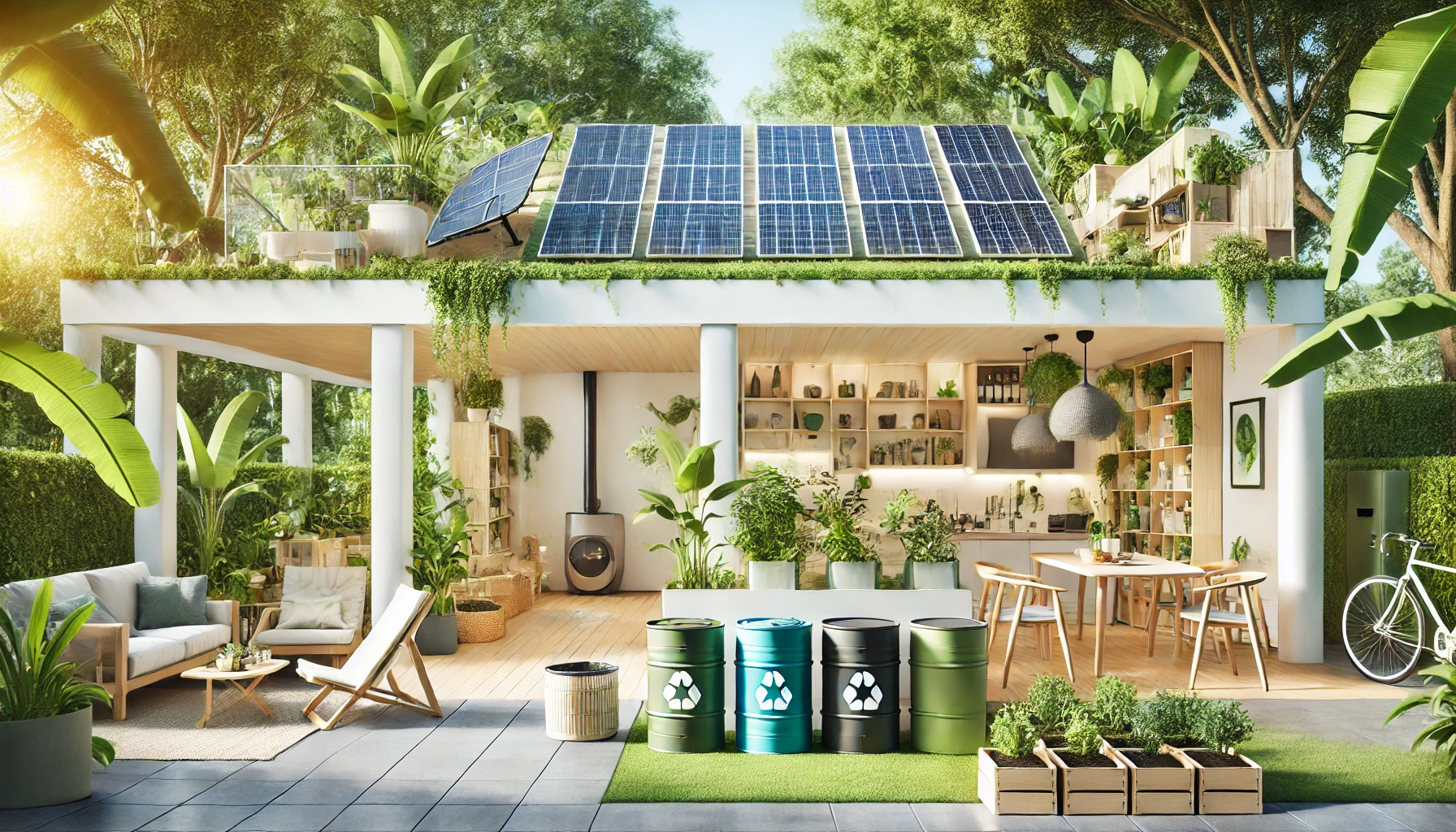Creating a more sustainable home doesn’t have to be a daunting task. Small changes can make a big difference in reducing your environmental impact and making your home more eco-friendly. Whether you’re looking to save energy, reduce waste, or embrace a more sustainable lifestyle, the following five steps will help you create a home that’s both green and cost-effective.
Step 1: Make Your Home Energy-Efficient
One of the most significant ways to reduce your carbon footprint and lower energy bills is by improving your home’s energy efficiency. Here are some simple steps to get started:
1.1 Upgrade to Energy-Efficient Appliances
When it’s time to replace appliances, choose energy-efficient models. Look for the Energy Star label, which indicates that an appliance meets energy efficiency standards. Energy-efficient refrigerators, dishwashers, and washing machines consume less energy, saving you money over time.
1.2 Insulate Your Home
Proper insulation helps maintain a comfortable indoor temperature by keeping the heat in during winter and the cool air in during summer. Add insulation to your attic, walls, and floors to reduce your heating and cooling costs. Weatherproof your windows and doors to prevent drafts and reduce the need for heating and air conditioning.
1.3 Install Smart Thermostats
A smart thermostat helps control your home’s temperature more efficiently. It allows you to program your heating and cooling system to only run when needed, reducing energy waste and saving money. Some smart thermostats can be controlled via smartphone apps, allowing for even more convenience and energy control.
Step 2: Reduce Water Consumption
Water conservation is another key element of a sustainable home. Using less water helps preserve this precious resource and can also lower your utility bills. Here’s how you can reduce water consumption:
2.1 Fix Leaks Promptly
A small leak can waste gallons of water each day. Check your faucets, toilets, and pipes for leaks and repair them promptly to avoid unnecessary water waste.
2.2 Install Low-Flow Fixtures
Low-flow showerheads and faucets use significantly less water without sacrificing performance. By replacing older fixtures with low-flow alternatives, you can save water every day, whether you’re showering, washing dishes, or brushing your teeth.
2.3 Collect Rainwater
If possible, set up a rainwater harvesting system in your garden or yard. A rain barrel can collect rainwater that you can use to water plants, clean outdoor areas, or even wash your car. This reduces the need to use treated tap water for outdoor chores.
Step 3: Go Green with Sustainable Materials
Incorporating sustainable materials into your home is a great way to reduce your environmental impact. From furniture to flooring, choosing eco-friendly materials can make your living space healthier and more sustainable. Consider the following:
3.1 Choose Recycled or Upcycled Materials
Recycled materials, such as reclaimed wood, recycled metal, or repurposed furniture, can be used in a variety of ways around your home. These materials are often more affordable and less resource-intensive than buying new items.
3.2 Opt for Natural, Non-Toxic Products
When renovating or decorating, look for non-toxic, natural products such as low-VOC paints, sustainable fabrics, and eco-friendly flooring options like bamboo or cork. These materials reduce harmful emissions and are often healthier for both you and the environment.
3.3 Buy Furniture Made from Sustainable Resources
When purchasing furniture, choose pieces made from sustainably sourced wood or other eco-friendly materials. Look for certifications like FSC (Forest Stewardship Council), which ensures the wood is harvested responsibly.
Step 4: Reduce, Reuse, and Recycle
Waste reduction is an essential part of creating a sustainable home. By minimizing waste and recycling materials, you can significantly reduce your environmental impact. Here are some tips for reducing waste:
4.1 Recycle Properly
Ensure that you’re recycling correctly by sorting your waste according to your local guidelines. Many items, such as paper, glass, and certain plastics, can be recycled and turned into new products.
4.2 Repurpose Items
Instead of throwing things away, consider how they can be repurposed. Old furniture can be refinished, and jars and bottles can be used for storage. Repurposing reduces waste and gives new life to items you might otherwise discard.
4.3 Compost Your Organic Waste
Composting is an eco-friendly way to deal with food scraps and yard waste. It turns organic materials into nutrient-rich compost that you can use to enrich your garden soil. Composting reduces landfill waste and helps your garden thrive.
Step 5: Create a Green Indoor Environment
The environment inside your home is just as important as the one outside. To make your home more sustainable, consider these eco-friendly practices for maintaining a healthy indoor environment:
5.1 Use Indoor Plants
Indoor plants improve air quality by absorbing carbon dioxide and releasing oxygen. They also help regulate humidity and can reduce indoor pollutants. Choose low-maintenance plants such as snake plants, pothos, or succulents, which are ideal for indoor environments.
5.2 Choose Non-Toxic Cleaning Products
Many conventional cleaning products contain harmful chemicals that can negatively impact your health and the environment. Switch to non-toxic, eco-friendly cleaning products made from natural ingredients. You can also make your own cleaners using simple ingredients like vinegar, baking soda, and lemon.
5.3 Maximize Natural Light
Instead of relying on artificial lighting during the day, try to maximize natural light by opening curtains and blinds. Consider using light-colored walls and furniture to reflect sunlight and brighten your living spaces. Installing skylights or large windows can also bring in more natural light.
Conclusion: Small Steps for a Sustainable Future
Making your home more sustainable doesn’t require drastic changes, but by taking small, thoughtful steps, you can create a more eco-friendly living space. From energy-efficient appliances to water conservation, sustainable materials, waste reduction, and green indoor environments, every step counts. Start with one change at a time, and over time, you’ll be amazed at the positive impact it will have on both your home and the environment.
